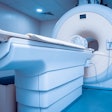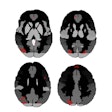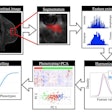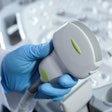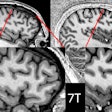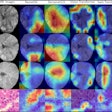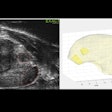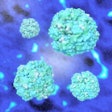The mechanics of the glenohumeral joint are no laughing matter. This synovial, multiaxial, articulated ball-and-socket joint can suffer from overuse or outright dislocation. The fibrous capsule that encases the fossa and the humeral head is rather lax -- sometimes abnormally so -- which can again result in injury.
At the 2004 Radiological Society of North America (RSNA) meeting in Chicago, a number of presentations will focus on ways to improve MR imaging of the shoulder joint. In an educational exhibit, Drs. Jared Sadler and Douglas Beall will demonstrate the appropriate patient position for the abduction external rotation (ABER) view of the shoulder during MRI (1395MK-e). The authors are from the University of Oklahoma Health Sciences Center in Tulsa.
A second education exhibit will focus on the correlation between MR arthrography of the shoulder and arthroscopy in different superior-labrum anterior-posterior (SLAP) lesions. The pearls and pitfalls of diagnosing labral pathology will also be addressed (1450EP-MK-e).
In a poster presentation, an Italian group will compare intra-individual conventional MR to MR arthrography for postoperative shoulder evaluation. Their poster also will correlate imaging results with surgical technique (1316MK-p).
A scientific paper will present the validity of fat-suppressed 3D GRE direct MR arthography of the shoulder, in combination with virtual MR arthrography, for determining labral lesions (SSK25-02). Finally, a third education exhibit will offer a primer on rotator cuff injuries and imaging (1342MK-e).
What all these presentations have in common is the reliance on conventional MRI. But the modality may be less suited for detecting partial or shallows tears. In a published study, a multi-institutional group sought to refine shoulder MRI using an extremity system.
An extremity MR system "offers distinct advantages over conventional MR systems, including reduced start-up costs, more convenient sitting and installation, lower maintenance fees, and greater patient comfort and safety," wrote Dr. Michael Zlatkin and colleagues in the Journal of Magnetic Resonance Imaging. "An evaluation of the diagnostic performance of this scanner with regard to orthopedic surgeon-based MRI facilities is warranted" (May 2004, Vol. 19:5, pp. 623-631).
Zlatkin is from the National Musculoskeletal Imaging in Sunrise, FL, as is his co-author, Dr. Cary Hoffman. A third co-investigator, Frank Shellock, Ph.D., is from the Keck School of Medicine at the University of Southern California (USC) in Los Angeles.
This retrospective study included 160 patients from five different MRI facilities. The orthopedic-based facilities were based in Oklahoma, South Carolina (two), Arkansas, and Texas. The patients underwent MRI and surgery between December 2000 and November 2001.
Imaging was performed on a 0.2-tesla extremity MR system (E-scan, Esaote, Genoa, Italy and GE Healthcare, Waukesha, WI, both study sponsors), using a dedicated, linear shoulder coil. The MR protocol included T1-weighted spin echo, T2-weighted spin echo, and STIR. Imaging time ranged from 50-70 minutes.
The images were interpreted by two musculoskeletal radiologists. A partial rotator cuff tear was defined as an incomplete tendon defect, outlined by high signal intensity on T2-weighted, contrast MR.
According to the surgical or arthroscopic results, there were 130 rotator cuff tears, 53 labral tears, two anterior tears, and 34 without specific categorization, at all five centers together. MRI correctly identified 117 rotator cuff tears (90%), for a sensitivity of 90%, a specificity of 93%, a positive predictive value (PPV) of 98%, and a negative predictive value (NPV) of 68%.
For the glenoid labrum, MRI correctly found 29 tears (55%), turning in a sensitivity of 55%, a specificity and PPV of 100%, and an NPV of 82%.
The authors noted that the greater number of false-negative findings for both the glenoid labrum and the rotator cuff was logged at the MRI facility in Oklahoma City, OK. This may be because of their surgical technique, diagnostic criteria, or patient population, they wrote.
They concluded that extremity MRI's sensitivity was high for rotator cuff tears, but relatively low for labral tears. Pairing extremity MRI with MR arthography may increase the modality's sensitivity and specificity in the glenoid labrum, they suggested.
The author also stated that the success of extremity MRI depends in large part on reader expertise, emphasizing that shoulder MR on low-field systems "would be best performed and interpreted by MRI-trained, musculoskeletal radiologists ... working closely with the referring orthopedic surgeons."
By Shalmali Pal
AuntMinnie.com staff writer
November 17, 2004
Related Reading
MR clarifies paralabral cysts as common source of hip pain, September 6, 2004
Pitchers' shoulder injury throws a tough diagnosis, August 27, 2004
Shoulders bear brunt of water polo's demands, August 20, 2004
Low-field MR turns in varying results for MSK abnormalities, trauma, December 22, 2003
Copyright © 2004 AuntMinnie.com
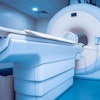

.fFmgij6Hin.png?auto=compress%2Cformat&fit=crop&h=100&q=70&w=100)
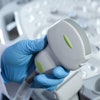



.fFmgij6Hin.png?auto=compress%2Cformat&fit=crop&h=167&q=70&w=250)
